Watch Your Step: Identifying Hazardous Plants in the Pacific Northwest

Exploring the Pacific Northwest’s forests, mountains, and coasts brings us face to face with nature’s stunning variety. Among the diverse flora that paints these landscapes, there are, however, certain plants that hikers and campers should be aware of for their safety. These potentially hazardous plants can cause everything from mild irritation to severe allergic reactions, and in some cases, serious burns or even death.
This article serves as a guide for outdoor enthusiasts to better identify and understand the common hazardous plants in the Pacific Northwest. With the right knowledge, you can enjoy your adventure while keeping yourself and your group safe. Remember, a key part of safe hiking and camping is being able to respect the nature around you, and that starts with knowing what you’re walking amongst. So, let’s delve into the green world and equip ourselves with some plant wisdom.
Table of Contents
- Common Hazardous Plants in the Pacific Northwest
- Poison Ivy (Toxicodendron radicans)
- Western Poison Oak (Toxicodendron diversilobum)
- Stinging Nettles (Urtica dioica)
- Giant Hogweed (Heracleum mantegazzianum)
- Spurge Laurel (Daphne laureola)
- Other Hazardous Plants
- Tools and Resources for Plant Identification
- Know Before You Go
Common Hazardous Plants in the Pacific Northwest
The Pacific Northwest is home to a vast array of plant life, including some that pose potential risks to hikers and outdoor enthusiasts. Knowledge of these plants is critical to ensure a safe and enjoyable outdoor experience. Below are some of the most common hazardous plants you may encounter:
- Poison Ivy (Toxicodendron radicans): Perhaps the most infamous of all hazardous plants, poison ivy is known for its three-leaf clusters and varying colors throughout the seasons. Contact with its oil, urushiol, can cause a rash, itching, and blistering.
- Western Poison Oak (Toxicodendron diversilobum): Similar to poison ivy, poison oak features clusters of three leaves and can cause the same unpleasant reactions. It can grow as a shrub or vine and thrives in both open and wooded areas.
- Stinging Nettles (Urtica dioica): This plant, usually found in damp, shaded areas, has tiny hairs on its leaves and stems that, when touched, can cause a painful, stinging sensation followed by redness and itchiness.
- Giant Hogweed (Heracleum mantegazzianum): This invasive species can grow up to 14 feet tall with broad leaves and clusters of white flowers. Its sap can cause severe skin burns and eye injuries when exposed to sunlight.
- Spurge Laurel (Daphne laureola): A non-native species, spurge laurel is an evergreen shrub with greenish-yellow flowers. All parts of the plant are toxic and can cause intense burning sensations if ingested or contact dermatitis if touched.
Recognizing these plants and understanding the potential risks they pose can greatly enhance your safety when exploring the Pacific Northwest. It’s also important to remember that individual reactions to these plants can vary, and any plant can cause an allergic reaction in certain individuals. If in doubt, it’s best to avoid touching unfamiliar plants and always wash your hands and gear after a hike. Let’s take a deeper dive into each of these hazardous plants.

Poison Ivy (Toxicodendron radicans)
Poison Ivy, scientifically known as Toxicodendron radicans, is a plant you’re likely to encounter while hiking or camping in the Pacific Northwest. Known for its infamous itch-inducing properties, this plant poses a risk to those who unknowingly come into contact with it.
Characterized by clusters of three leaflets, poison ivy can take the form of a shrub or a climbing vine, growing vigorously along riverbanks, road sides, and disturbed areas. Its leaves change color with the season - vibrant green in the spring and summer, turning to a reddish hue in the fall.
The danger of poison ivy lies in its sap, which contains a compound called urushiol. This clear, oily substance is present in all parts of the plant and can cause an allergic reaction known as contact dermatitis upon exposure. The reaction, however, varies among individuals; while some may experience severe, blistering rashes, others might have milder symptoms or no reaction at all. It’s worth noting that sensitivity to urushiol can increase with repeated exposures.
If you think you have come into contact with poison ivy, it is essential to wash the area thoroughly with soap and cool water as soon as possible to help remove the urushiol from your skin. Avoid scratching the area to prevent the rash from spreading and becoming infected.
When exploring the Pacific Northwest, understanding how to identify and avoid poison ivy is a crucial skill for ensuring a safe and enjoyable outdoor experience. Remember the popular saying: “Leaves of three, let them be,” and always stick to paths and open spaces when hiking or setting up camp.
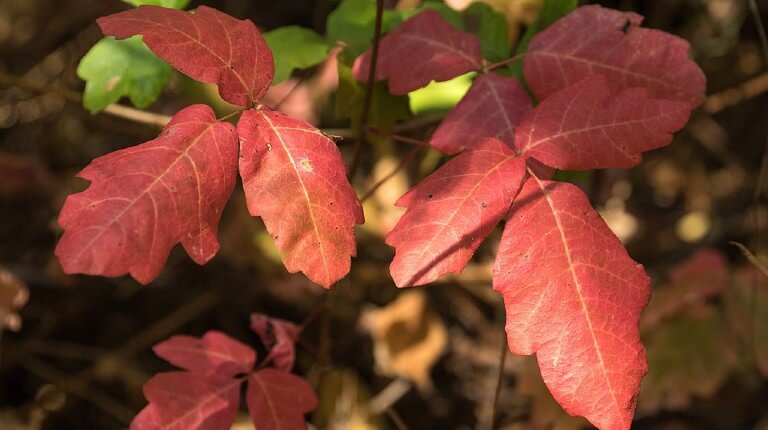
Western Poison Oak (Toxicodendron diversilobum)
Another plant to be aware of while hiking or camping in the Pacific Northwest is the Western Poison Oak, known scientifically as Toxicodendron diversilobum. Similar to poison ivy, this plant contains urushiol, a clear, oily substance that can cause contact dermatitis in sensitive individuals.
Western Poison Oak typically grows as a low shrub in open, sunny areas and can reach heights of up to six feet under ideal conditions. In shaded environments, it often takes on a vine-like habit, climbing up trees and other structures.
Identifying Western Poison Oak can be a bit tricky due to its variable leaf shapes, but it is commonly recognized by clusters of three leaflets, resembling the leaves of a true oak. During the spring, new leaves may appear bronzed or reddish, maturing to a deep green in the summer. In fall, the foliage takes on vibrant autumnal hues of orange and red.
Skin contact with any part of the plant - leaves, stems, roots, or berries - can result in an itchy, blistering rash. Much like with poison ivy, not everyone will react to poison oak, but sensitivity can increase with repeated exposures.
If you suspect that you’ve been exposed to poison oak, washing the area thoroughly with soap and cool water can help remove the urushiol and prevent a reaction. If a rash develops, over-the-counter remedies like hydrocortisone cream and calamine lotion can help soothe the itch.
When venturing into the great outdoors, it’s important to remember the rule: “Leaves of three, let them be.” By learning to recognize and steer clear of plants like Western Poison Oak, you can make your outdoor adventures in the Pacific Northwest both safer and more enjoyable.
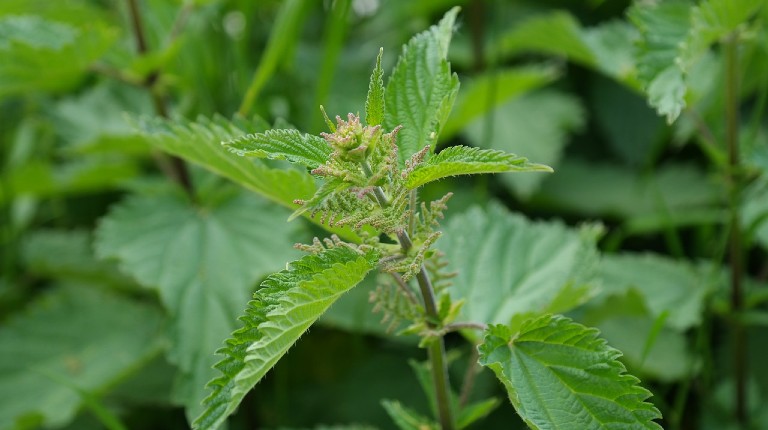
Stinging Nettles (Urtica dioica)
Stinging nettles, or Urtica dioica, are a common sight in the Pacific Northwest, especially in moist, nutrient-rich soils like the edges of meadows, stream banks, or disturbed sites.
Stinging nettles stand out with their tall, upright stems and pairs of roughly heart-shaped leaves that have a serrated edge. They can grow up to 2-5 feet in height. The entire plant is coated in tiny hairs, giving the leaves and stems a rough texture. But beware - these aren’t ordinary hairs.
What gives stinging nettles their name are the numerous tiny, needle-like hairs that cover the plant’s leaves and stems. When brushed against, these hairs break off and can inject various compounds into the skin, including histamine, acetylcholine, and serotonin. The result is an immediate, painful sting, followed by a red, itchy rash that can last for several hours to a few days.
Despite the sting, nettles are a remarkable plant with a host of uses. They are high in nutrients and are often used in herbal teas, tinctures, or even cooked like spinach (the cooking process neutralizes the stinging hairs). However, for the unaware hiker or camper, a close encounter can be quite unpleasant.
If you happen to brush against stinging nettles, washing the area with soap and water as soon as possible can help to remove the plant hairs and alleviate the sting. Applying a soothing substance like aloe vera or calamine lotion can also help to manage the itch. Remember, the best way to avoid the sting is to recognize and steer clear of the plant while you’re out on the trail.
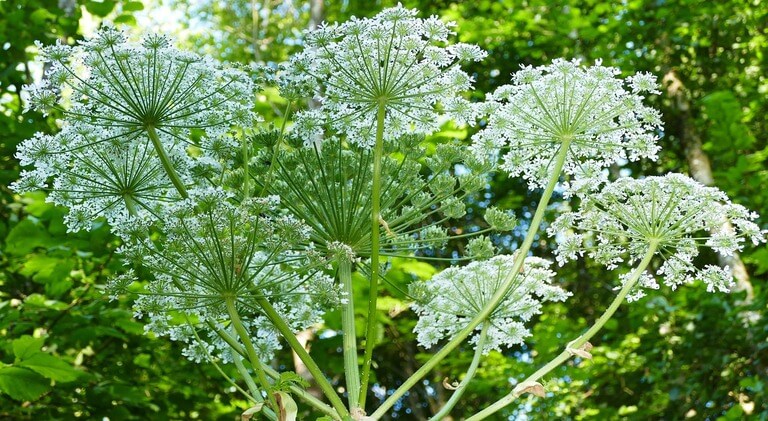
Giant Hogweed (Heracleum mantegazzianum)
Giant Hogweed, scientifically known as Heracleum mantegazzianum, is a plant that’s beautiful yet deceptively dangerous. This species, originating from Southwest Asia, is now commonly found across the Pacific Northwest and is considered invasive.
The plant can grow incredibly tall, reaching up to 14 feet, and has large, deeply lobed leaves that can span up to 5 feet across. What draws attention are its size and its large, white umbrella-like flower clusters, known as umbels, that can measure up to 2.5 feet in diameter.
But the captivating size and beauty of the giant hogweed hide a sinister secret. Its clear, watery sap contains photosensitizing compounds known as furanocoumarins. When these compounds come into contact with human skin and are then exposed to sunlight, they can cause a condition called phytophotodermatitis. This condition results in severe skin inflammation, blistering, and painful burns that can leave long-lasting scars. In extreme cases, if the sap gets in the eyes, it can even lead to temporary or permanent blindness.
If you come into contact with giant hogweed, it is critical to wash the affected area thoroughly with soap and water, and avoid exposure to sunlight for 48 hours. Clothing and tools that came into contact with the plant should also be washed to prevent further exposure.
The danger posed by this plant emphasizes the importance of being able to identify it. If you spot giant hogweed, it is best to report it to local environmental or conservation authorities, as it’s typically removed by professionals due to its hazardous nature.
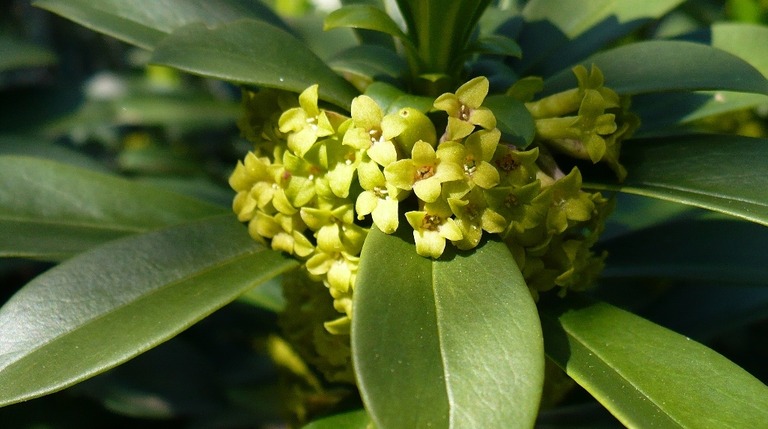
Spurge Laurel (Daphne laureola)
Spurge laurel is an evergreen shrub that is native to Europe but has become an invasive species in the Pacific Northwest. Although it has attractive, dark-green leaves and clusters of small, green-yellow flowers, hikers should be wary of this plant.
Here’s why:
- Toxicity: All parts of the plant, particularly the berries, contain powerful toxins. If ingested, these can cause severe abdominal pain, a burning sensation in the mouth and throat, and even more serious symptoms such as abnormal heart rhythm or respiratory distress. In rare cases, ingestion can be fatal.
- Skin Irritation: Contact with the plant’s sap can cause severe dermatitis, characterized by blistering, inflammation, and intense itching. This is particularly problematic for those who might unknowingly use the plant for firewood or shelter material.
- Identification: Spurge laurel grows up to 1.5 meters high and has a single, woody stem. The leaves are glossy, lanceolate (shaped like a lance head), and grow in a spiral pattern around the stem. Its flowers, which bloom in late winter and early spring, are small, green, and hang in clusters. The plant produces one-seeded, oval, black berries in late summer that are poisonous to people and pets, but not to birds.
- Distribution: In the Pacific Northwest, it’s often found in urban parks, forested areas, and along trails, particularly in understory habitats.
When you spot spurge laurel, it’s important to avoid touching it and certainly avoid ingesting it. If you suspect you have come into contact with the plant, wash the area thoroughly with soap and water as soon as possible. If you or someone else has ingested any part of the plant, seek immediate medical attention.
Other Hazardous Plants
There are a variety of other hazardous plants that hikers and campers in the Pacific Northwest may encounter. Here are a few noteworthy ones:
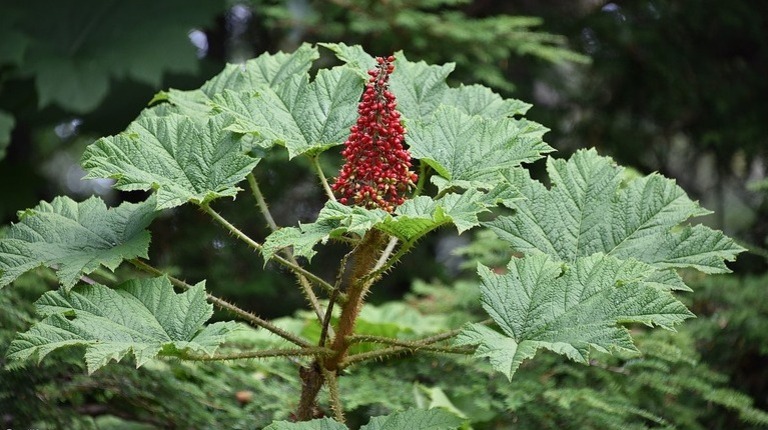
- Devil’s Club (Oplopanax horridus): This is a large shrub identifiable by its large, maple-like leaves and woody stems covered in sharp, needle-like spines. Touching the spines can cause skin irritation and wounds, and it’s even been known to puncture hiking boots.
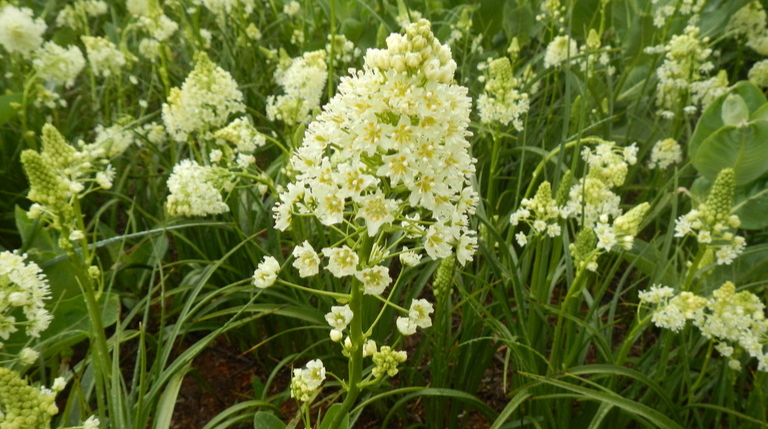
- Death Camas (Zigadenus species): Death Camas are groups of plants with bulb-like structures that bear a close resemblance to onions or garlic. However, they are highly toxic when ingested and can cause severe poisoning or even death.
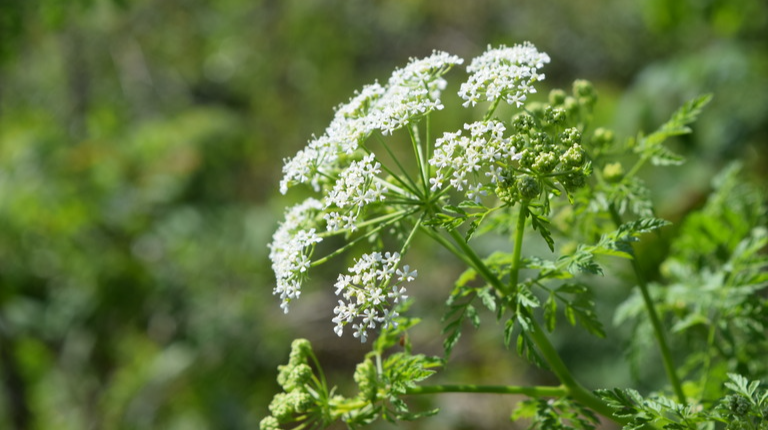
- Hemlock (Conium species): Not to be confused with the benign Hemlock tree, this hemlock is a highly poisonous plant. Both the Western Water Hemlock and Poison Hemlock are harmful and can be lethal if ingested.
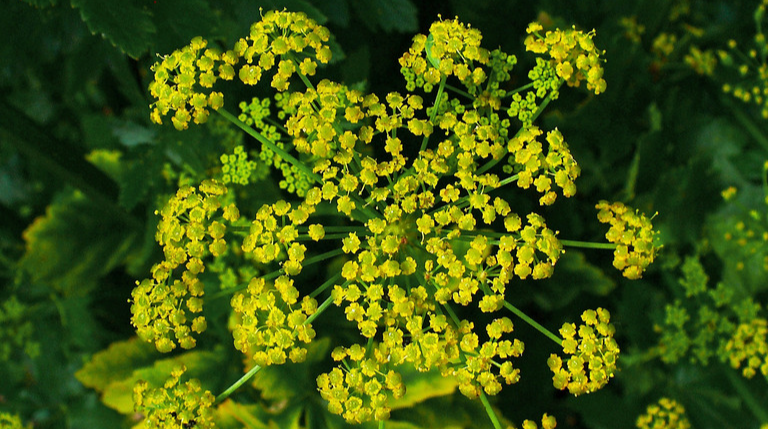
- Wild Parsnip (Pastinaca sativa): Wild parsnip produces a sap that can cause phytophotodermatitis, similar to giant hogweed. This results in skin inflammation and blisters when the affected skin is exposed to sunlight.
Remember, these are just a few examples, and there are other hazardous plants out there. The best protection is always knowledge, so take the time to familiarize yourself with potentially harmful local flora before heading out on your adventure.
Tools and Resources for Plant Identification
In the age of technology, identifying unknown plants has become more accessible than ever. Here are some tools and resources that can assist you in identifying hazardous plants:
- Smartphone Apps: Several apps can identify plants based on a photograph. These include PlantSnap, PictureThis, and iNaturalist. While these apps are a fantastic resource, it’s important to remember they are not 100% accurate and should not replace learning about hazardous plants.
- Field Guides: Traditional field guides such as the A Field Guide to California and Pacific Northwest Forests or the National Wildlife Federation Field Guide to Trees of North America can be invaluable resources when it comes to identifying plants.
- Local Expertise: Local ranger stations, university extensions, and hiking clubs often have a wealth of knowledge about the plants in their area. Don’t hesitate to reach out to them for information or guidance.
- Online Forums and Social Media Groups: Websites like Reddit and various Facebook groups have communities of plant enthusiasts who can often help with identification.
- Plant Identification Books: Books such as Plants of the Pacific Northwest Coast by Jim Pojar and Andy MacKinnon provide extensive information about local flora, including hazardous ones.
Remember, no tool or resource should be a substitute for careful preparation and personal education before heading out on a hike or camping trip. Safety always comes first when adventuring in the great outdoors.
Know Before You Go
Understanding and identifying hazardous plants is an essential skill for every hiker and camper, especially those venturing into the Pacific Northwest’s diverse landscapes. With several plant species capable of causing discomfort or even severe harm, prior knowledge can truly make a difference in your outdoor experiences.
Whether it’s the itchy rash from Poison Ivy and Poison Oak, the painful sting of the Stinging Nettles, or the potential for severe burns from the Giant Hogweed, being able to identify and avoid these plants is crucial.
Remember, the outdoors is there for us all to enjoy, but it’s also home to many species that require our respect and caution. Always:
- Do your research before heading out.
- Ensure you are well-prepared and have the appropriate first-aid supplies on hand.
- Take care when moving through unfamiliar terrain.
- Use the resources and tools available to you, like identification apps, and field guides.
With these tips and knowledge, you can safely enjoy the majestic beauty of the Pacific Northwest. Happy trails!


